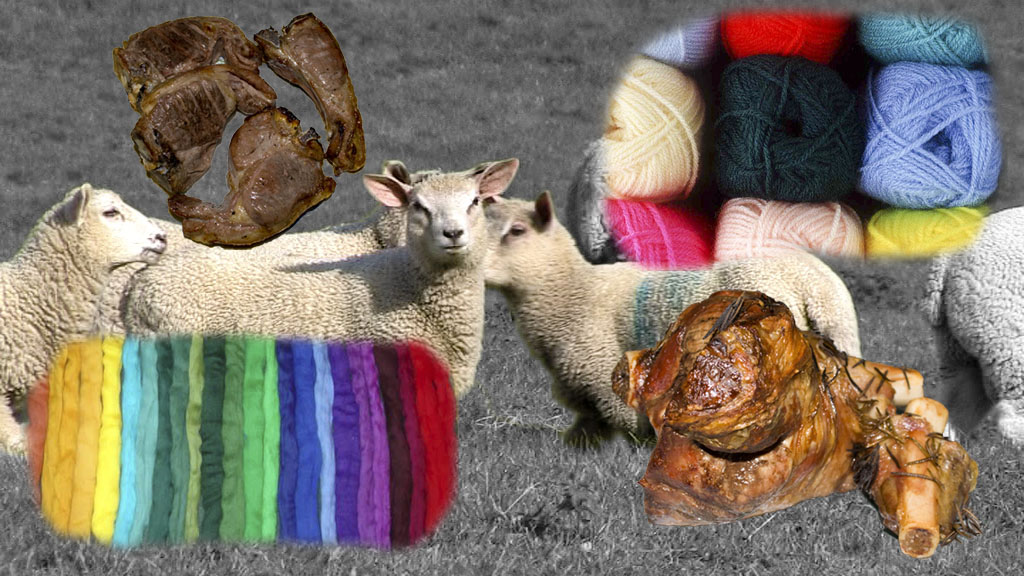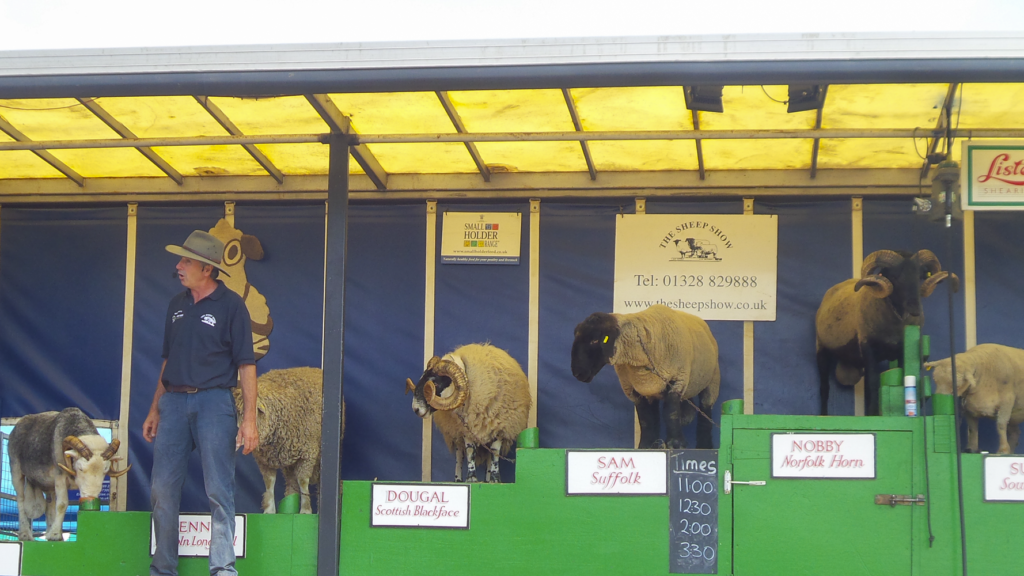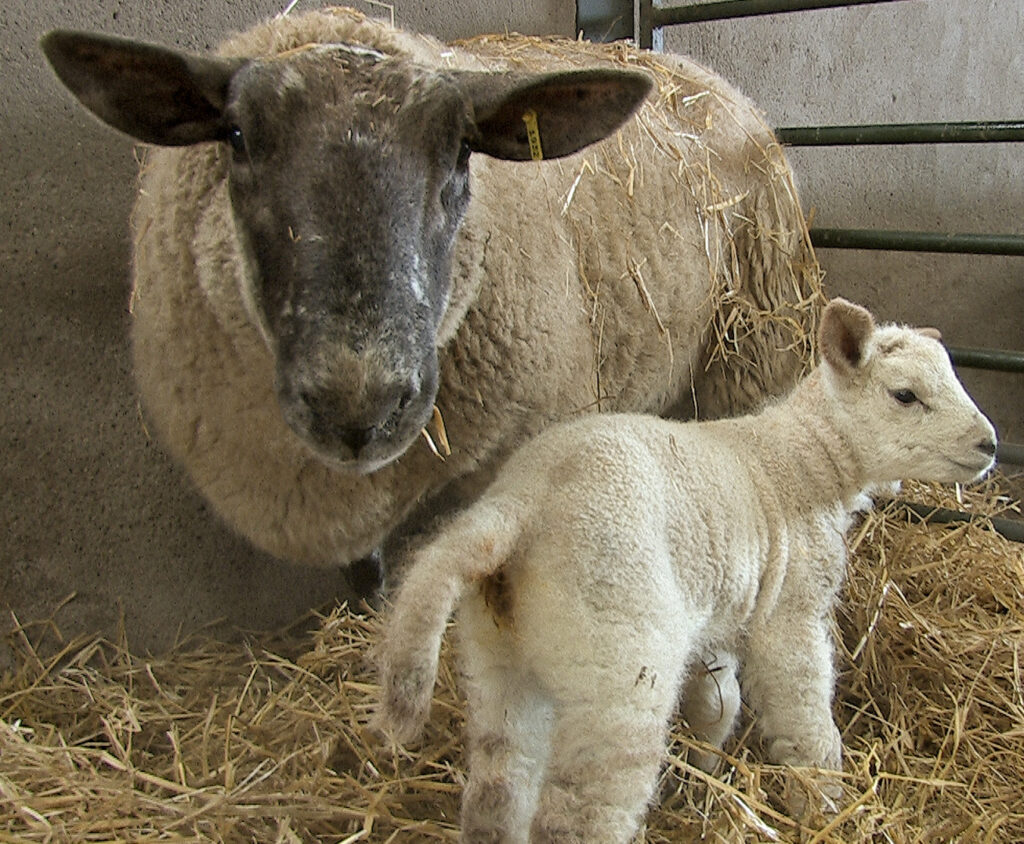A Brief History
Sheep may be either wild or domesticated; the domesticated varieties are the most widely distributed kind of domestic animal, found in nearly all countries. Sheep were probably domesticated about 11,000 years ago in what is now northern Iraq. Domestic sheep are kept for:

- Pelts and wool for clothing (less important now with man made products)
- Meat in the form of lamb or mutton.
- Milk for drinking and cheese making.
- And in some countries sheep are used to a limited extent as pack animals.
Sheep in the UK
In the UK sheep are primarily kept for meat, the wool these days is often of little value, in many cases it hardly covers the cost of the shearing. Some sheep are also kept for their milk, which is generally used to make cheese. The methods of keeping sheep is almost as varied as the number of flocks, but is often divided into Lowland and Hill Sheep. The number of breeds and how these are crossed is also very varied. The information here is meant as a general outline and not a definitive guide.
Sheep Breeds.
There are many breeds of sheep in the UK, with a few being used throughout and some more localised. Many shepherds use a breeding system which is based on crossing several breeds to get the ideal lamb for slaughter. Some of the breeds which feature commonly in this are:

- Scottish Blackface.
- A hardy hill breed
- Swaledale
- Another hardy hill breed
- Blue Faced Leicester
- A lowland breed of sheep
- Border Leicester
- Another lowland breed of sheep
- Suffolk
- This breed is used to produce a carcass which has lots of meat on.
- Texel
- This is a continental breed also used to produce a carcass with lots of meat on.
Of course if I have missed any other important breeds please let me know!
Mule Ewes

Typical Mule ewe with lamb
A mule Ewe is produced by crossing a Scottish Blackface or Swaledale with a Blue Faced Leicester, the females for this cross are then mated (or Tupped) with a Suffolk or Texel to give lambs with carcasses which contain lots of meat.
Many shepherds have their own favoured variation of the best cross for a Mule Ewe
Outline of the sheep production cycle.
Sheep, unlike most other farm animals, are seasonal breeders. Their lambing is timed for spring, so that the lambs are born when the weather is warming and plenty of grass is available. With a gestation period of 147 days this means that Ewes only come into oestrus and are receptive to the rams in the autumn. Hill sheep or usually lambed outside, but may be brought down to ‘in by’ land near to the farm so that the shepherd can better manage the lambing and any difficulties which may occur. Other breeds of sheep are now generally lambed inside, being housed a few weeks before they are due to lamb. Many of these Ewes will have been ultra-scanned to see if they are carrying 1,2 or 3 lambs. This allows the shepherd to put them in suitable groups which can be managed together and given extra food to improve the lambs birth size. Lambing starts spring, just when will have been managed by when the Tups where introduced in the autumn and timed for the location of the particular farm and when spring generally arrives in that location.. The last thing a new born lamb needs once turned out from the lambing shed at a few days old is a quick return to cold wet winter weather.